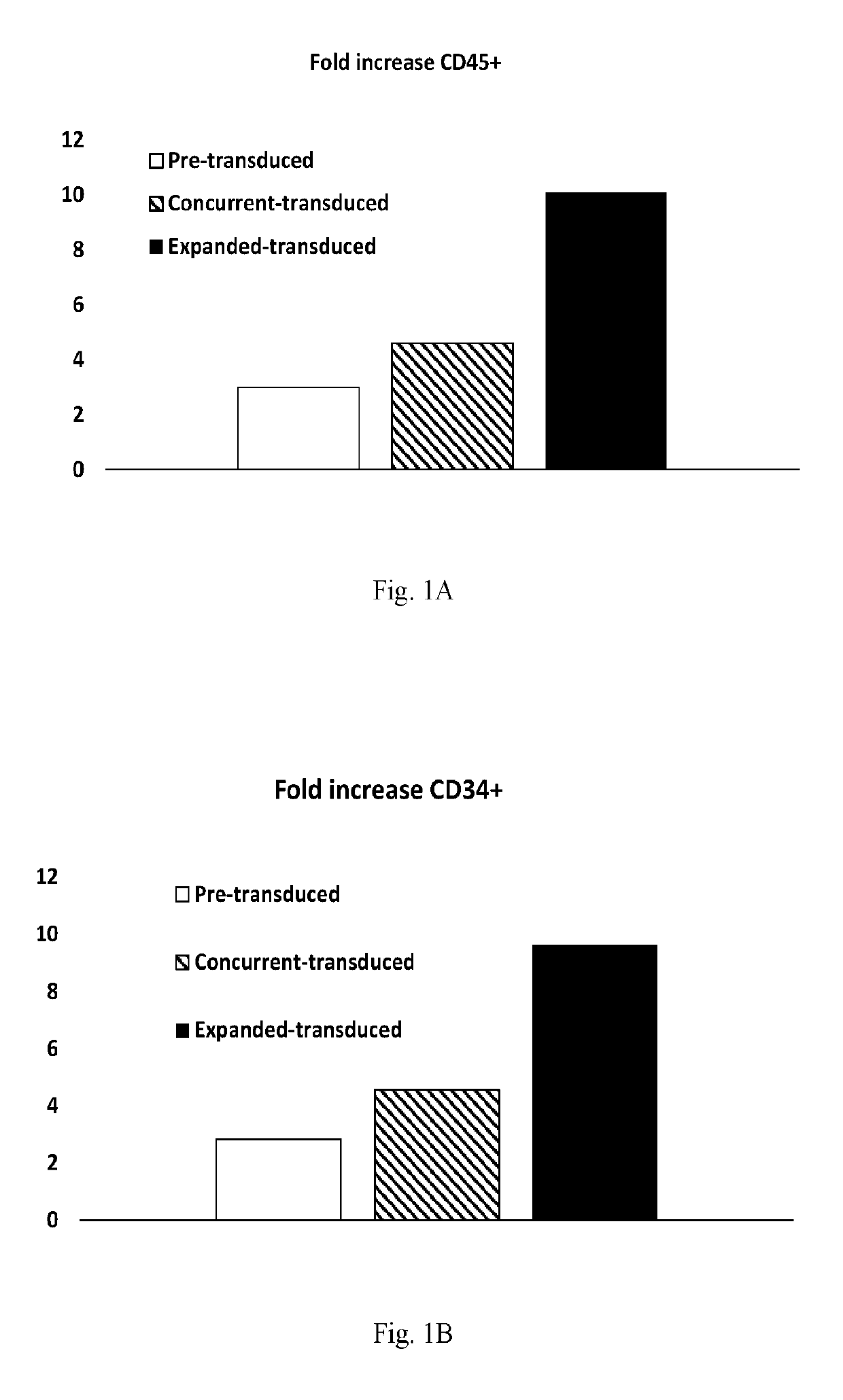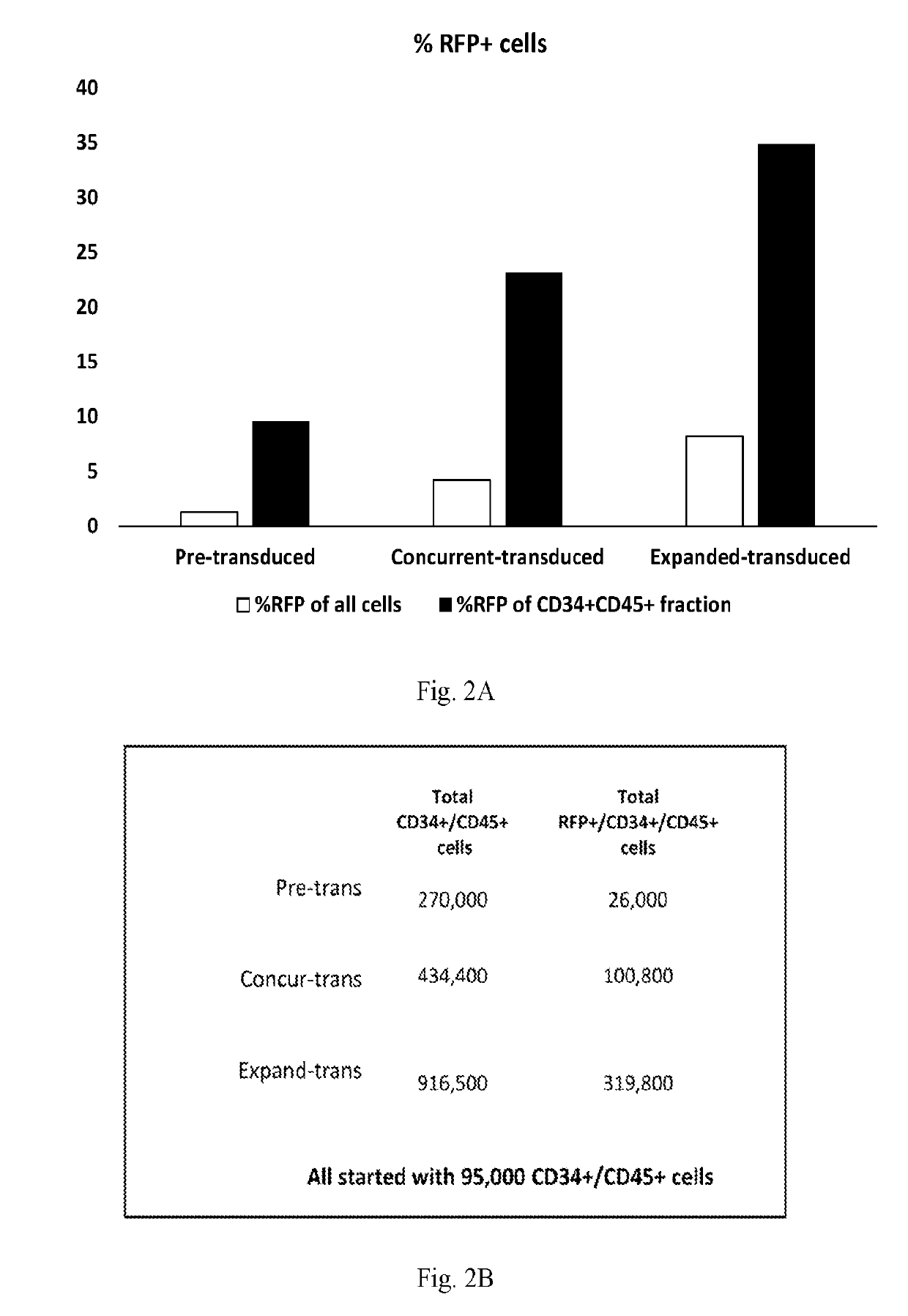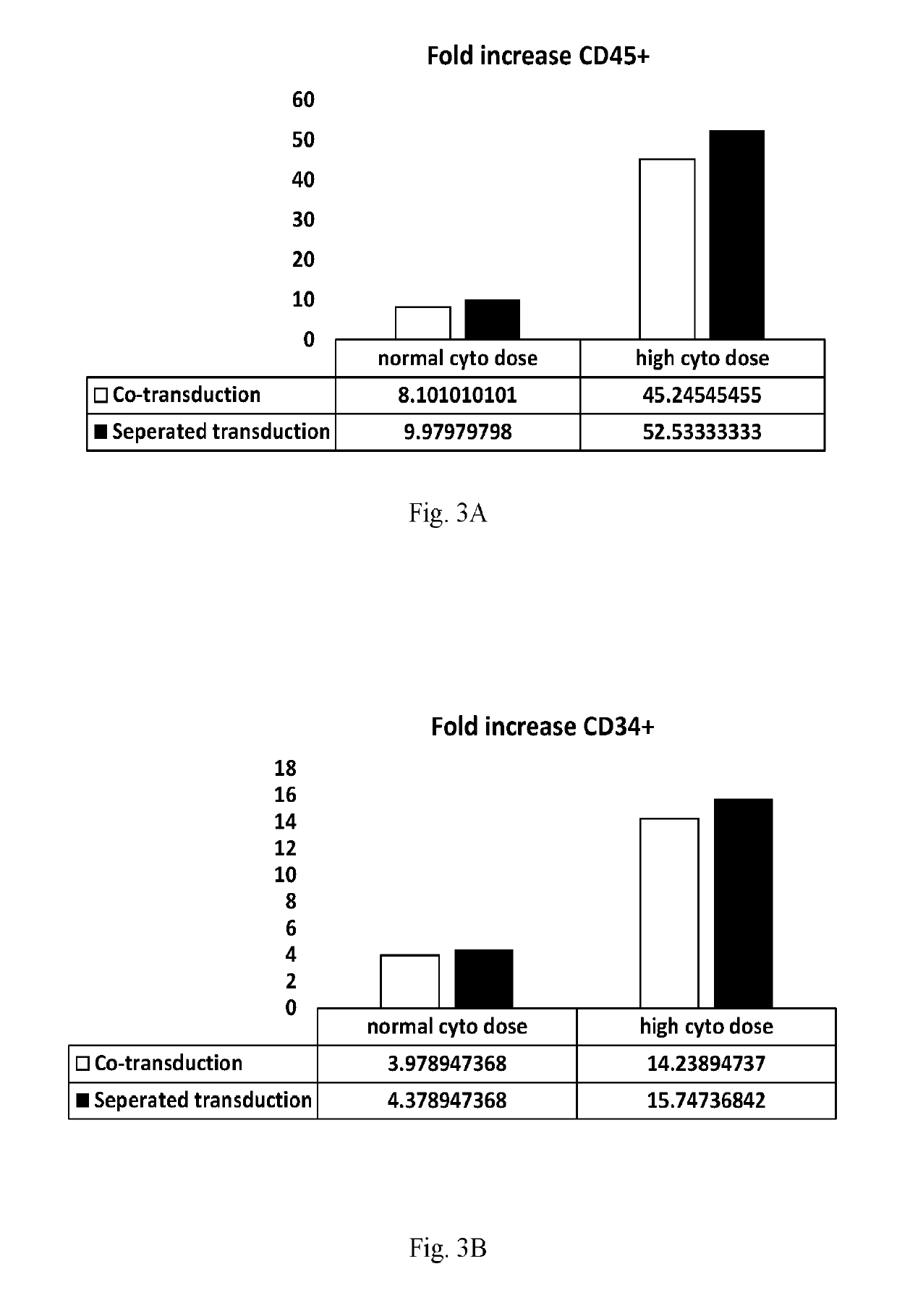Enhanced gene delivery methods
a technology of gene delivery and gene-correction, applied in the field of enhanced gene delivery methods, can solve the problems of cell death, inefficient gene-correction attempts in these and other cells, etc., and achieve the effect of reducing the transfection or transfection efficiency and targeting cell transduction or transfection efficiency
- Summary
- Abstract
- Description
- Claims
- Application Information
AI Technical Summary
Benefits of technology
Problems solved by technology
Method used
Image
Examples
example 1
Effect of E4ORF1+Co-Culture on Expansion & Viral Transduction of HSPCs
[0080]Experiments were performed to assess the effects of E4ORF1+ endothelial cells on the ability to expand and transduce CD34+ / CD45+ HSPCs. CD34+ cells (Lonza) were transduced with Red Fluorescent Protein (RFP) and expanded on E4ORF1+ umbilical vein endothelial cell (UVEC) cultures in 6-well plates using the three different protocols, as follows:
[0081]In protocol 1, transduction was commenced 24 hrs prior to starting HSPC-E4ORF1+ UVEC co-culture (“Pre-transduced”).
[0082]In protocol 2, transduction was performed concurrently with HSPC-E4ORF1+ UVEC co-culture (“Concurrent-transduced”).
[0083]In protocol 3 HSPCs were co-cultured with E4ORF1+ UVEC for 48 hrs, after which floating HSPCs were transferred to an empty well for transduction (24 hrs), and then following transduction the HSPCs were co-cultured with E4ORF1+ UVEC (“Expanded-transduced”).
In each of the above protocols cell culture was performed under hypoxic c...
example 2
Effect of Floating Fraction & Cytokines on Viral Transduction Efficiency
[0085]Experiments were performed to determine the effect of removing the ‘floating fraction’ of CD34+ hematopoietic cells on transduction efficiency and to determine if cytokine concentration has an influence on transduction efficiency.
[0086]CD34+ cells (Lonza) were transduced with Blue Fluorescent Protein (BFP) and expanded on E4ORF1+ UVEC cultures in 6-well plates using the following 4 different protocols, as follows:
[0087]In protocols 1 and 3, HSPCs were expanded on E4ORF1+ UVEC cultures for 96 hours and then subsequently transduced by incubating the HSPCS with lentivirus engineered to express BFP for 24 hours—while the HSPCs were still on the E4ORF1+EC feeder layer. The HSPCs were then expanded on the E4ORF1+ UVEC cultures for a further two days. Results obtained using these protocols are referred to in the figures as “co-transduction” results
[0088]In protocols 2 and 4, HSPCs were expanded on E4ORF1+ UVEC cu...
example 3
Rescue of Transfected Cells by Subsequent EC Co-Culture
[0093]Transfected or transduced cells, such as cells transfected by electroporation, can be cultured with ECs after transfection or transduction. Such subsequent co-culture can “rescue” cells that have been damaged by the transfection or transduction process—reducing cell death and loss of the transfected or transduced cells. Such co-culturing should be commenced “immediately” after the transfection or transduction step is commenced (as that term is defined in this patent specification), and should continue for sufficient time to allow recovery of the target cells. Without wishing to be bound by theory, it is believed that such “rescue” can occur as a result of cell-to-cell contact between the two cell populations (i.e. the transduced / transfected cells and the ECs), and / or as a result of exposure of the transduced / transfected cells to soluble factors secreted by the ECs, such as angiocrine factors and cytokines. The co-culture o...
PUM
| Property | Measurement | Unit |
|---|---|---|
| Fraction | aaaaa | aaaaa |
| Fraction | aaaaa | aaaaa |
| Defects | aaaaa | aaaaa |
Abstract
Description
Claims
Application Information
 Login to View More
Login to View More - R&D Engineer
- R&D Manager
- IP Professional
- Industry Leading Data Capabilities
- Powerful AI technology
- Patent DNA Extraction
Browse by: Latest US Patents, China's latest patents, Technical Efficacy Thesaurus, Application Domain, Technology Topic, Popular Technical Reports.
© 2024 PatSnap. All rights reserved.Legal|Privacy policy|Modern Slavery Act Transparency Statement|Sitemap|About US| Contact US: help@patsnap.com










